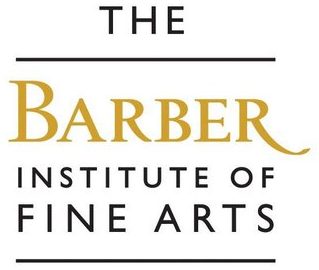In April 2004, the Barber Institute of Fine Arts was given a comprehensive collection of rare Hungarian and Transylvanian coins by Edgar Guest, an alumnus of the University of Birmingham. Mr Guest has painstakingly collected numismatic issues from nearly every Hungarian ruler of the last millennium. Mr Guest also generously donated his extensive collection of numismatic literature dealing with Hungarian numismatics and monetary history.
One of the collection’s most striking coins is a silver 15 kreuzer coin minted during the reign of Maria Theresa (1741-80), the Hapsburg Queen of Hungary, later to be crowned Holy Roman Empress. This particular kreuzer was minted only two years after Maria Theresa’s accession to the throne. The obverse of the coin is typical for the period, bearing the standard imagery and inscriptions of Hapsburg coins circulating throughout the Empire. The bust of Maria Theresa dominates the obverse and represented the imperial authority by which the coin circulated. It would also have been a well-recognised image throughout the multi-lingual, multi-cultural and huge Habsburg Empire, which in 1743 stretched from the regions of modern Austria and Romania (west and east) and Bosnia-Herzegovina and Poland (south and north). Circling the imperial bust is the inscription: M : THERES: D • G : REG : H •U• B •O •A •A (Maria Theresa, by the Grace of God, Queen of Hungary, Bohemia, Archduchess of Austria). The reverse of the coin also carries a traditional image, the Virgin and Child. This had appeared on periodically on Hungarian coins since the reign of Stephen I in the 10th century.
As the inscription on the reverse reveals, the Virgin is the patroness of Hungary (PATRONA: REG). Here, she is pictured crowned, with the Christ Child on her lap, bearing a sceptre in her left hand. This regal imagery, along with the inscription, uses the religious language of the largely Catholic empire to convey subtle messages of power: the Virgin pictured is not the compliant young Virgin of the Annunciation, who humbly consented to bear the Son of God. Instead she is depicted as the celestial queen who intercedes for her subjects. As ‘Apostolic Queen of Hungary’, Maria Theresa was the Virgin’s earthly counterpart.
It was the use of the title ‘Apostolic Queen’ that caused Maria Theresa difficulties with the Catholic Church. When she assumed the Hungarian throne in 1741, she immediately took the title, an honorary epithet created seven hundred years earlier for Stephen I. At that time it had been bestowed by Pope Sylvester II primarily to assist in Christianising the region. It had not, however, been used since and Maria Theresa’s use of Marian imagery on coinage throughout her reign made clear the message which she sought to convey by claiming it now: both women were queens by divine right. When the Church balked at Maria Theresa’s use of the title, she sent letters patent to Pope Benedict XIV, expressing her hope that the Holy See would not withhold this title either to her, or to future rulers of Hungary. Thus began a seventeen-year battle with the Church, of which these coins may be seen as a part.
By using the Virgin and Child motif on all Hungarian coins minted during her reign, Maria Theresa reinforced four political objectives: she was both a woman and a mother, yet still powerful enough to rule; she was more than a queen to her subjects, she was their protector, their champion, their patroness; her throne was granted by divine right; a divine throne merits similarly inspired titles. The campaign eventually proved successful, with Maria Theresa being granted the title in 1758 by Pope Clement XIII.

